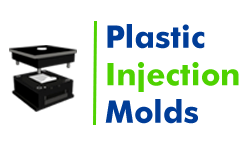- Mould Manufacturer
- Tooling
- Moulding Die
- Plastic Molding
- Plastic Injection Molding
- Injection Molding
- Nylon Injection Molding
- Injection Moulding
- Custom Injection Molding
- Injection Mould
- Injection Mouldings Process Manufacturers
- Medical Injection Molding
- Polycarbonate Injection Moulding
- Rapid Injection Moulding
- Injection Molds
- Injection Molding Cost
- Injection Molding Suppliers
- Injection Moldings
- HDPE Molding
- Metal Injection Molding
- Rubber Injection Molding
- Mold Designing
- Prototyping
- Automotive Injection Molding
- Blow Molding
- 3D Printing
Custom 3D Printing: Customizing The Parts
The manufacturers of today face immense pressure to meet the market demands and cater to the requirements of customers. Various industries, such as medical technology, automotive, and consumer goods require customized products to be designed based on their preferences.
Furthermore, the products need to be manufactured keeping in mind the profitability of the customers. The suppliers in the mobility and the automotive industries need to guarantee the availability of spare parts for the next few decades. To meet the production on demand, companies need custom 3D printing services wherein the production stays customized to each batch without any restrictions.
3D printing nylon: what you must know
Nylon is a flexible and synthetic plastic material that comes with extensive mechanical properties. Due to its versatile features, it is extensively used in industries for 3D printing. The filaments of nylon are more durable and flexible when compared to the other filaments. Furthermore, its capacity of absorbing moisture makes it one of the best materials needed in dyeing and in printed parts.
- The reason for adhering to 3D printing nylon is due to its durability and toughness.
- Nylon comes with strong mechanical strength and does not break easily.
- The impact-resistance potential of nylon and its ability to produce thicker parts with higher density makes it the right choice for printing thinner parts.
- When it comes to printing nylon, the flexibility of the filaments used in 3D printing makes it tougher when compared to other materials, making the filaments hard to break.
- The nylon filaments produce least friction, and do not require lubrication
- It comes with high chemical resistance making it the right choice for industrial applications.
- Nylon produces better quality of prints due to the filament materials.
- The self-sealing property helps in enhancing the surface finish.
No wonder, the most complicated designs may require nylon as the filaments aid in 3D printing task. The filaments do not require any cooling system or heated bed during printing. The nylon filaments are one of the best options for SLS nylon 3D printing due to its strength and durability.
Custom 3D printing near me: turning the efforts around
3D printing is one of those technologies that aid mass customization of products without adding to the cost. You need to connect with a reliable company offering custom 3D printing near me without spending for the initial cost of the mold and tools that are part of the traditional manufacturing techniques. We offer online services to boost the production process in a way that creates personalized products for the customers.
Why hire custom 3D printing services?
One of the reasons you must hire custom 3D printing services is to provide experience for the customers. The customers get the opportunity to choose and make the necessary changes in the objects based on their preferences. Moreover, customization makes the goods more valuable and eliminates risks as the objects are made to order and involves the customers themselves. Talk to us today to avail customized 3D printing service.
FAQ
- Q1. Is 3D Printing Nylon Difficult?
3D printing with nylon can be challenging due to its tendency to warp, poor bed adhesion, and sensitivity to moisture. However, with proper printer settings, such as temperature control and bed preparation, and using a filament dryer to manage moisture, successful prints can be achieved with nylon.
- Q2. What Are The 3 Disadvantages Of 3D Printing?
Three disadvantages of 3D printing are:
- Limited material options can restrict desired properties.
- Slow production speeds compared to traditional manufacturing methods.
- High initial equipment and material costs may hinder accessibility for small-scale projects or individuals.
- Q3. What Are 5 Benefits Of 3D Printing?
Here are five benefits of 3D printing:
- Customization: 3D printing enables the creation of highly customized products tailored to individual needs and preferences. This is particularly advantageous in fields such as healthcare, where personalized medical devices and prosthetics can be produced.
- Rapid Prototyping: Traditional manufacturing processes often involve lengthy prototyping phases. 3D printing allows for rapid iteration and testing of designs, speeding up the product development cycle and reducing time to market.
- Complexity at No Extra Cost: With conventional manufacturing methods, intricate designs can be costly and challenging to produce. However, 3D printing allows for the fabrication of complex geometries with minimal additional cost or effort, unlocking new design possibilities.
- Cost-Effective Production: While initial investment costs for 3D printers can be significant, they can be offset by savings in material waste, inventory management, and tooling expenses. Additionally, on-demand manufacturing reduces the need for maintaining large inventories, lowering overhead costs.
- Sustainability: 3D printing can contribute to sustainability efforts by reducing material waste through additive manufacturing processes. It enables localized production, reducing transportation emissions associated with global supply chains. Furthermore, 3D printing facilitates the use of recycled materials and biodegradable polymers, offering eco-friendly alternatives to traditional manufacturing materials.







.webp)

